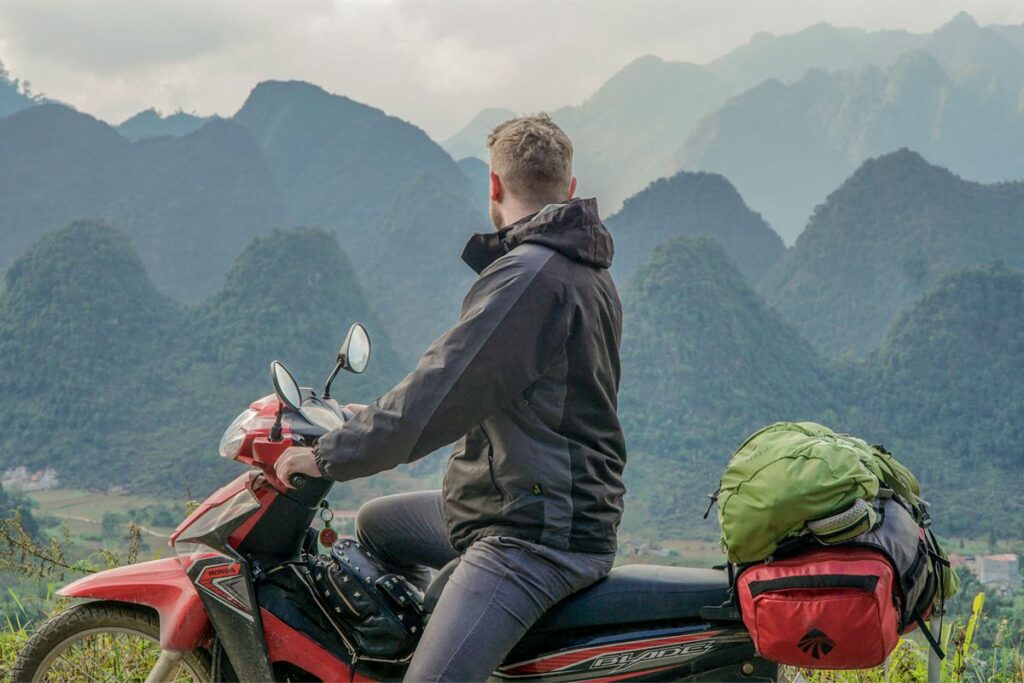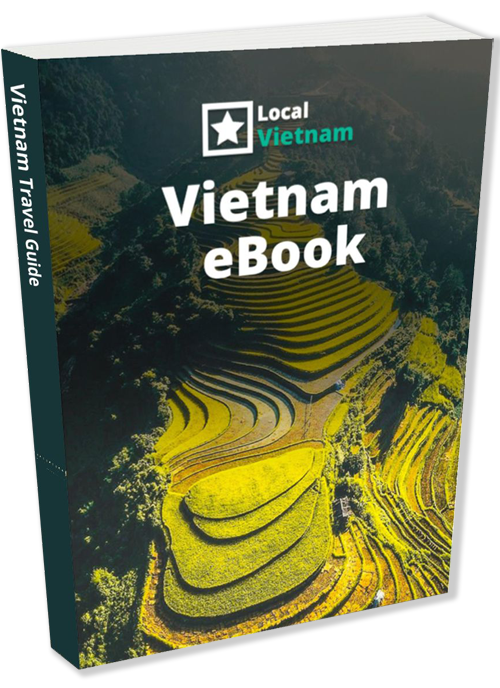History of the HMong King Palace
Centuries ago, the Hmong people migrated from China in to north Vietnam and ruled most of Ha Giang province. The Hmong ruled the region from the 19th century, first as vassals of the Nguyen kings and later as allies of the French during French colonial time, who even recognized them as one of the rulers of this region.
In the year 1898, with the approval of the French rulers, Chinese traders started to built a wooden palace in Sa Phin for the HMong kings according to the principles of feng shui, the philosophy that teaches that the environment affects happiness in life. This is also the reason why the palace has many influence from Chinese architecture in combination with the local HMong culture. The palace was finished around 1903.
The palace took 8 years to built and consist of no less than 64 rooms divided over 10 buildings with two levels and three open courtyards. The inside is decorated with images of sacred animals such as a dragon, turtle, unicorn and phoenix to show the prosperity of the family.
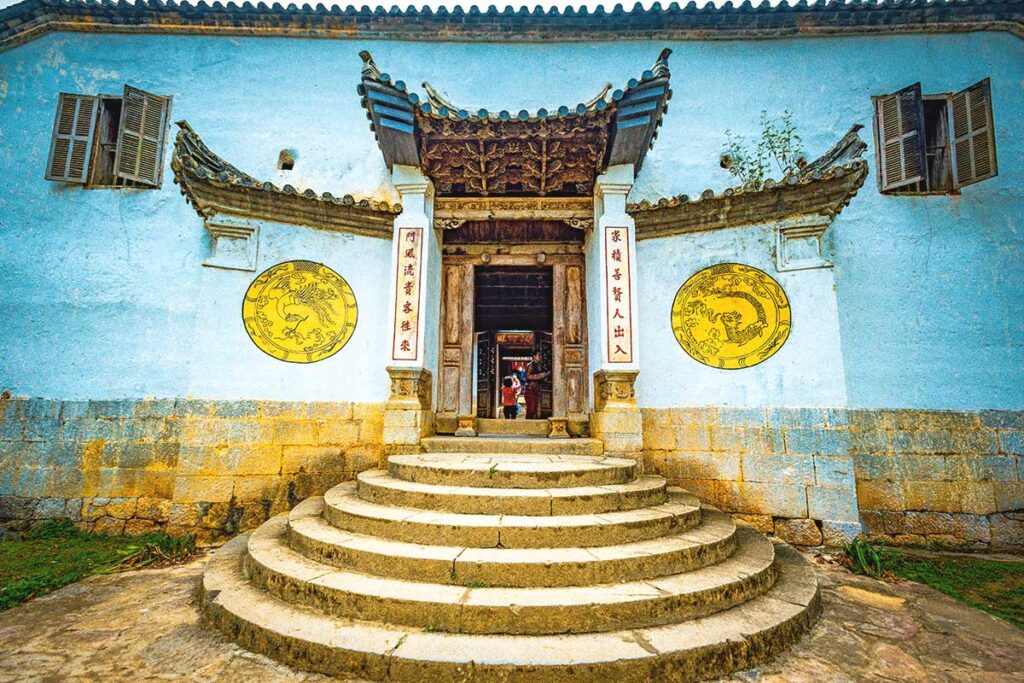
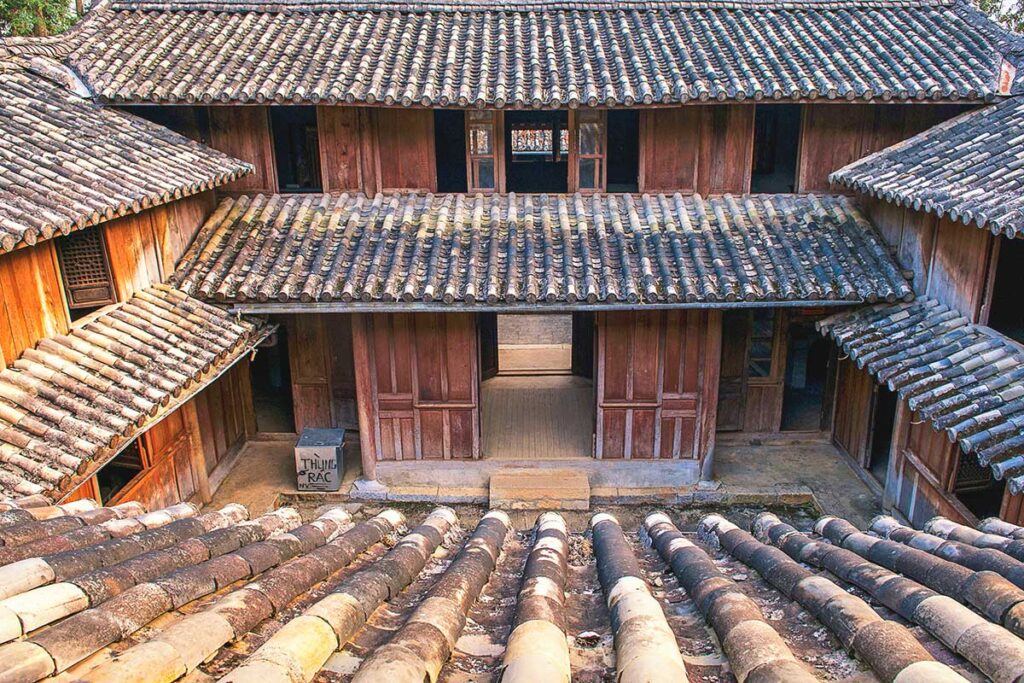
The HMong family that lived in this palace became very wealthy and powerful thanks to trading goods, especial from opium, as this area was an important opium trade link. They ruled the area up until Vietnam regained independence in 1945. The monarchy was abolished after Thanh died in 1962. The offspring of these family are still alive, but the palace is no longer inhabited.
Visiting the Hmong King Palace Today
The Hmong King Palace is now open to visitors, offering a fascinating glimpse into the past of Ha Giang’s once-powerful Hmong rulers. Walking through the palace, you’ll find ornate wooden carvings, traditional Hmong motifs, and a mix of Chinese, French, and Hmong architectural influences. The buildings are arranged in a fortified courtyard style, with thick stone walls for protection, tiled roofs, and wooden interiors that reflect both elegance and military function.
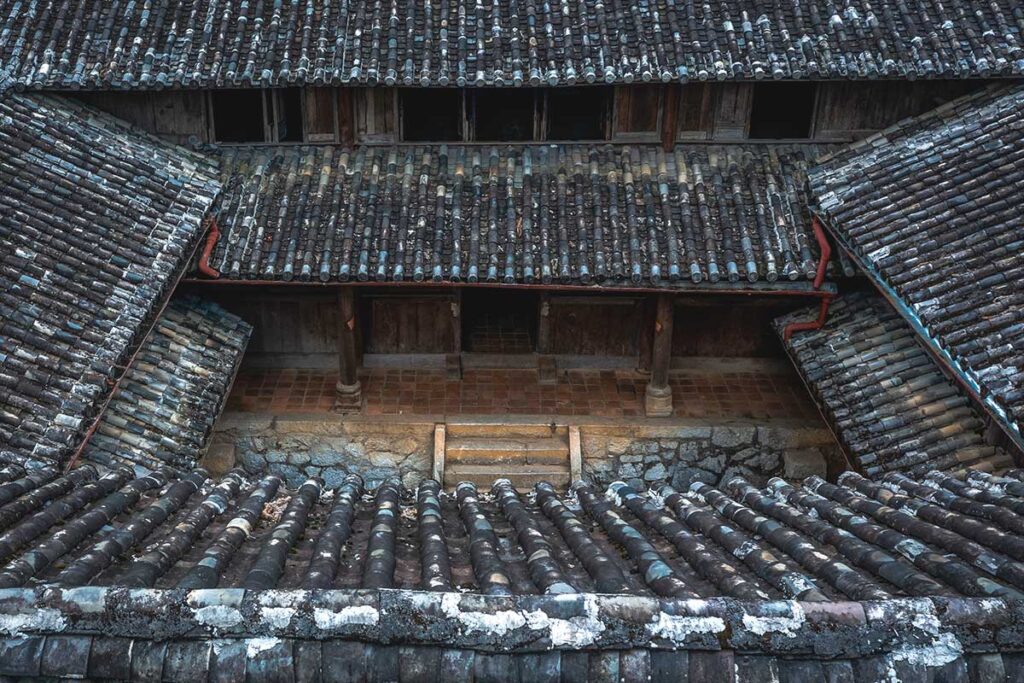
The palace grounds are divided into three main areas:
- The front section, which once housed guards and servants
- The middle section, where the family lived and conducted business
- The rear section, which included storage rooms and additional living quarters
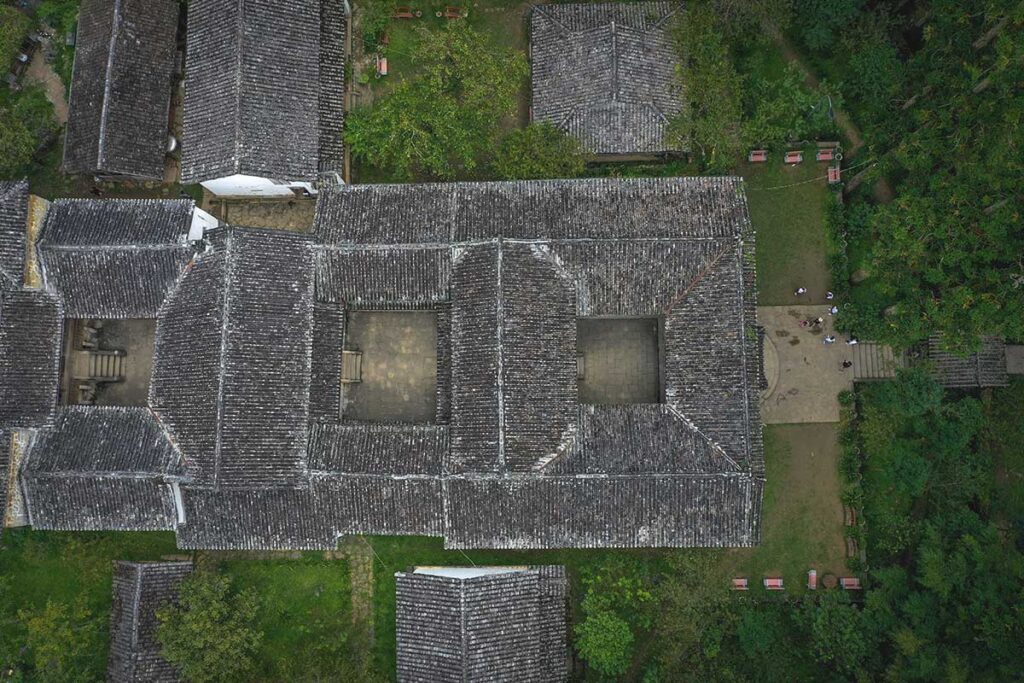
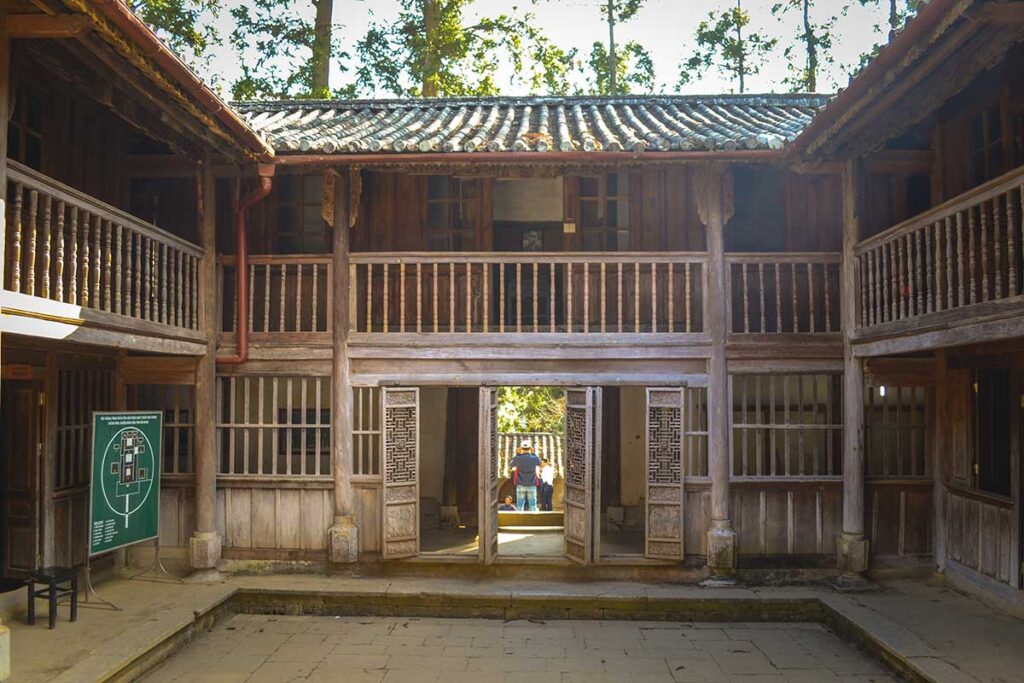
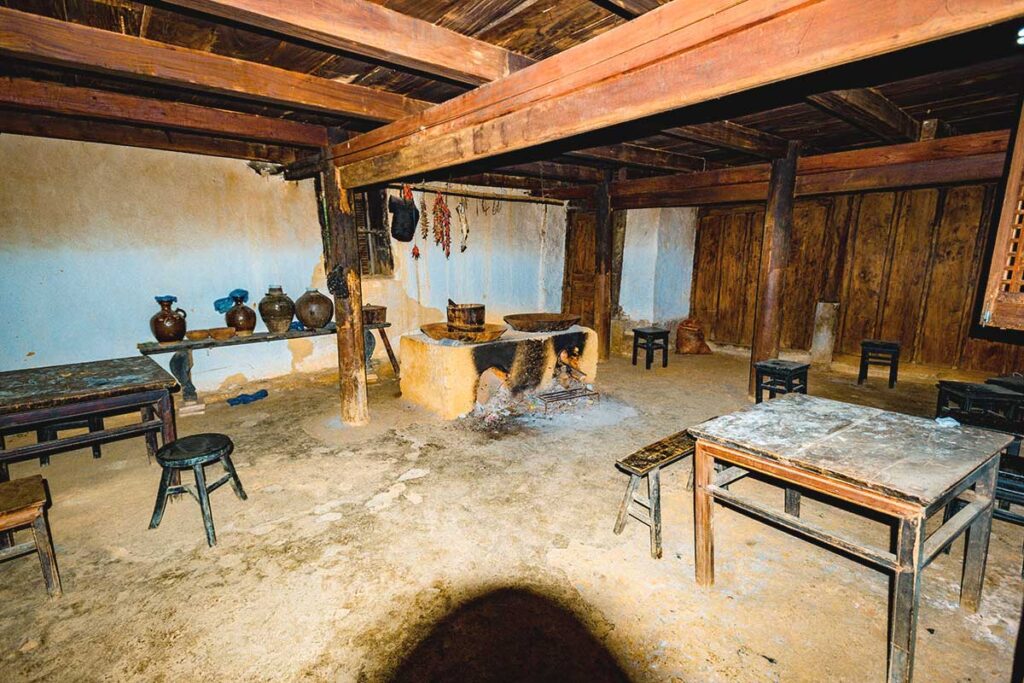
Inside, you can still see original wooden pillars decorated with opium poppy carvings, symbolizing the family’s wealth from the opium trade. Some Western-style features, such as stone bathtubs, glass window shutters, and a granite doorway, highlight the influence of French colonial rule. Despite being over a century old, much of the palace remains well-preserved, allowing visitors to step back in time and imagine life as it once was.
Visiting information
- Entrance Fee: 20,000 VND (approx. 1 USD)
- Opening Hours: Daily from 7:30 AM – 5:00 PM
- Best Time to Visit: Mornings are usually quieter, while weekends attract more local tourists
- Time Needed: Around 30 minutes to explore the palace and its surroundings
How to get there
Location
The Hmong King Palace is located in Sa Phin Valley, within Dong Van District of Ha Giang province. It is approximately 14 km from Dong Van town and 130 km from Ha Giang City, making it a convenient stop along the Ha Giang Loop.
Tip: Visit the Hmong King Palace on a guided tour
The Hmong King Palace is a key stop on our Ha Giang Loop tours. All options include transport, local insights, and a flexible route that covers this cultural landmark. See all available tours that include a visit here.
From Hanoi to Ha Giang
There is no airport or train station in Ha Giang, so travelers must take a bus, limousine van, or private car from Hanoi. The journey takes around 6 to 7 hours, with most travelers opting for overnight sleeper buses for a more efficient trip.
From Ha Giang City to the Hmong King Palace
Once in Ha Giang City, the best way to visit the Hmong King Palace is by doing the Ha Giang Loop, which naturally passes through Sa Phin.
Three ways to explore the Ha Giang Loop and reach the palace:
- Ride a motorbike yourself – A great adventure but recommended only for experienced riders with a proper license.
- Go with an Easy Rider (motorbike guide) – A safer option, allowing you to enjoy the scenery while a local driver takes you around.
- Travel by private car – The most comfortable way to visit, ideal for those who prefer not to ride motorbikes.
Other sights around the Hmong King Palace
The Hmong King Palace is just one of many interesting stops along the Ha Giang Loop. Nearby, you’ll find Dong Van and its Old Quarter, where traditional Hmong houses stand against a backdrop of towering limestone mountains. If you’re heading further north, the road from Sa Phin to Lung Cu, Vietnam’s northernmost point, is one of the most breathtaking drives in Ha Giang, passing through high mountain passes and remote ethnic villages.
Just south of Sa Phin, you’ll pass Tham Ma pass, a scenic stretch of winding road famous for its sharp switchbacks. Not far from here is Sung La valley, known for its picturesque landscapes and traditional ethnic houses, including the one featured in the famous Vietnamese movie Pao’s Story.


If you’re visiting on the right day, you may also catch the Sa Phin Market, a small but vibrant gathering where ethnic groups from the surrounding villages come to trade goods, buy supplies, and socialize. It’s a great place to witness local life, with people dressed in colorful traditional clothing, selling produce, handicrafts, and even livestock. The market is not a major attraction but offers an authentic cultural experience for those interested in seeing the region beyond its landscapes.
Read here a complete list of best things to do in Ha Giang.
Is the Hmong King Palace worth a visit?
Absolutely. The Hmong King Palace is located directly along the Ha Giang Loop, making it an easy and worthwhile stop. While most of the journey is about stunning mountain landscapes and ethnic villages, this palace adds a historical and cultural element to your trip. It provides a fascinating look into the power and wealth of the Hmong rulers, who once controlled this remote region through opium trade and alliances with colonial forces.
Visiting the palace is also a nice change of pace—after hours of riding through winding roads, it’s a great spot to take a break, stretch your legs, and explore something different. The architecture, history, and well-preserved details make it a worthwhile addition to your Ha Giang adventure. Even if you only spend 30 minutes here, it’s a stop that adds more depth to your journey through Vietnam’s far north.


